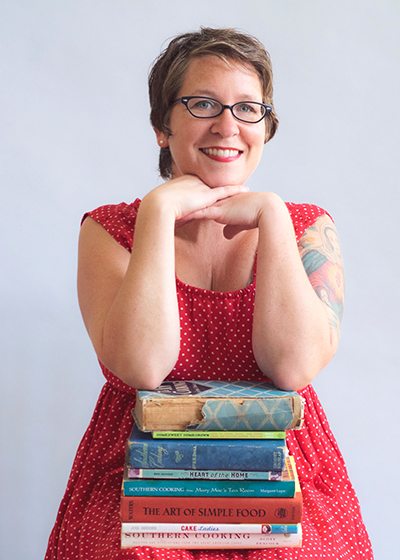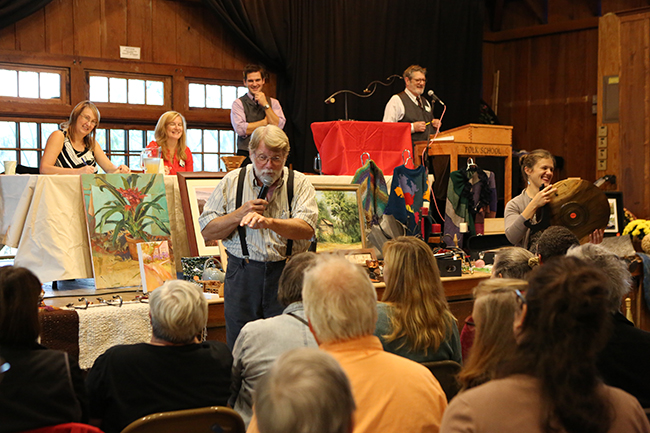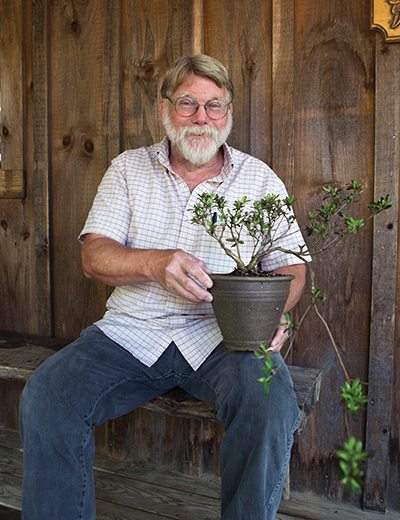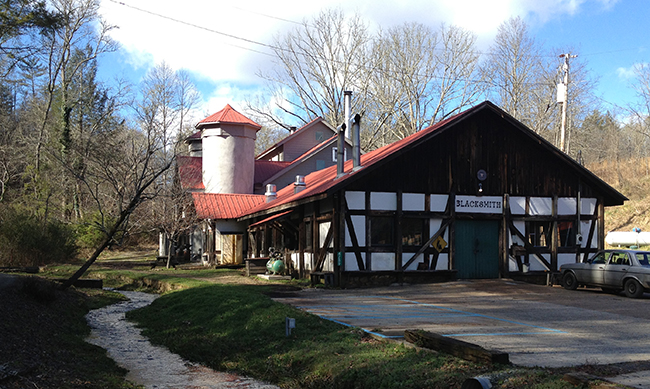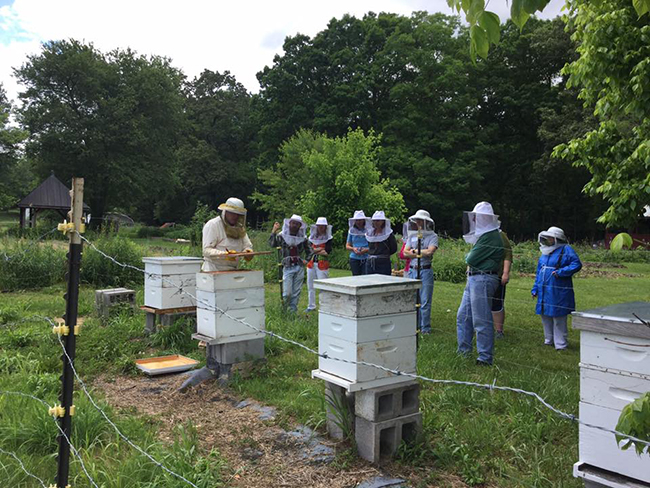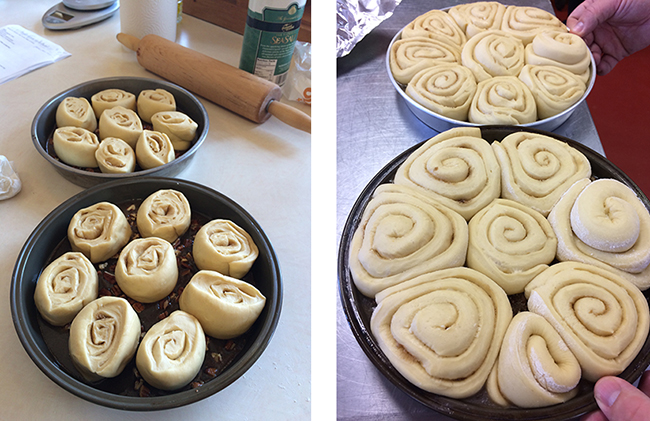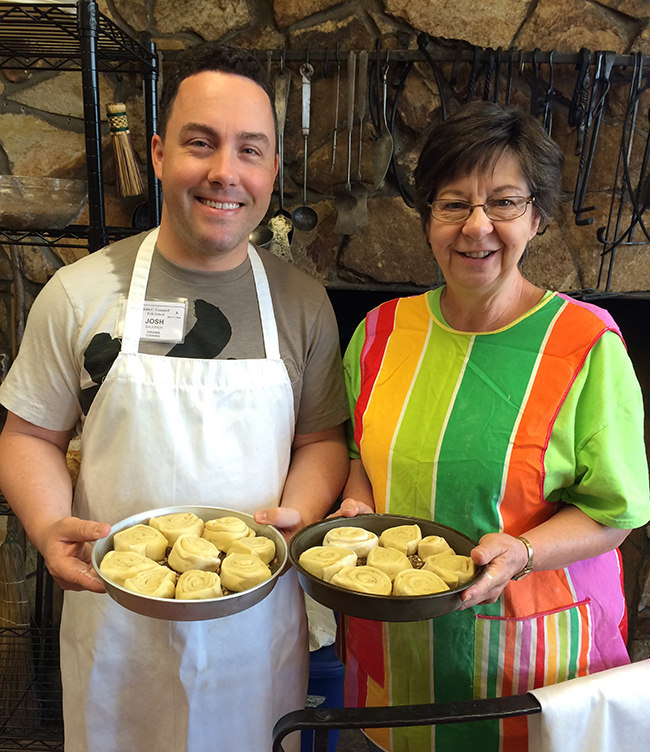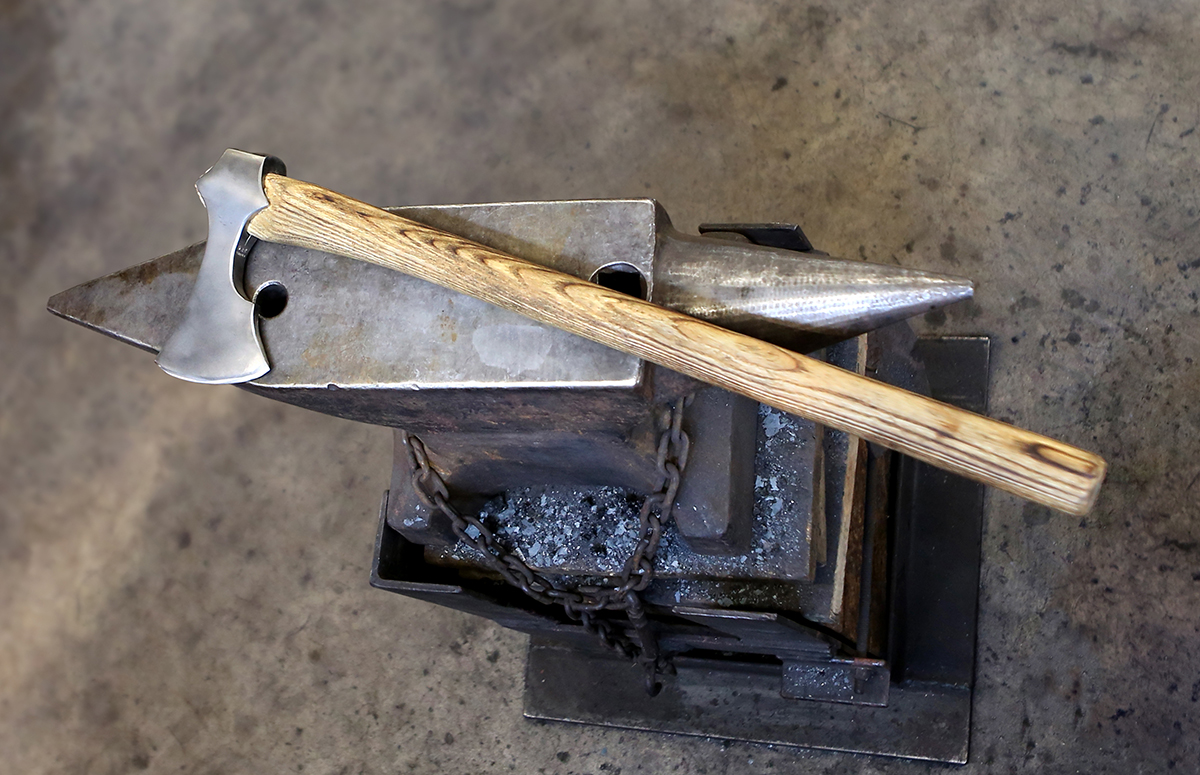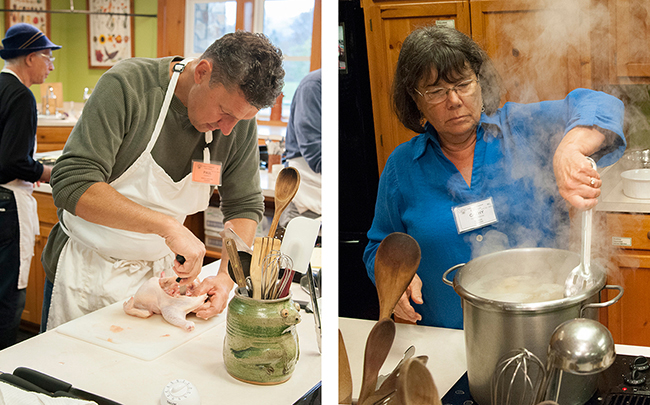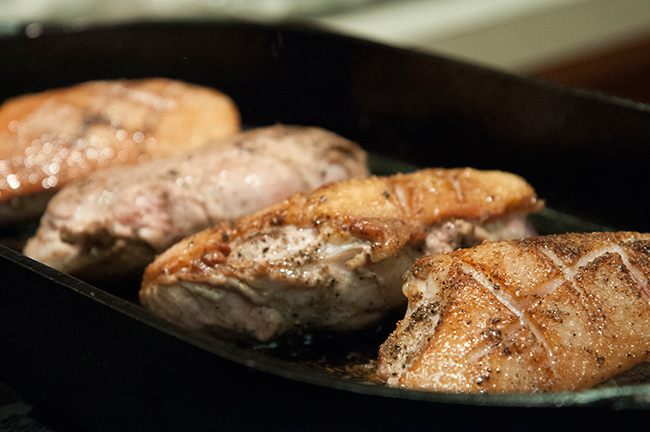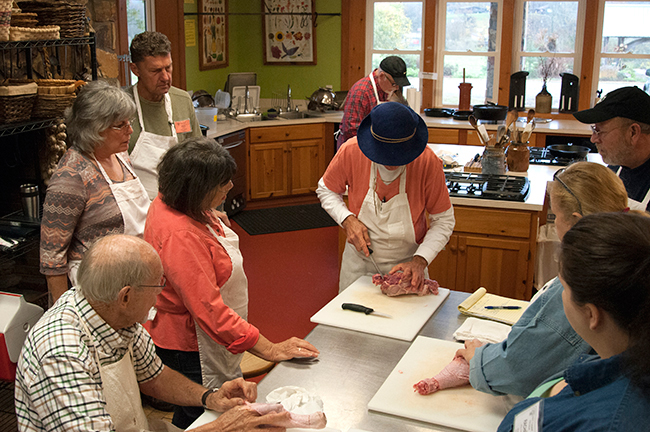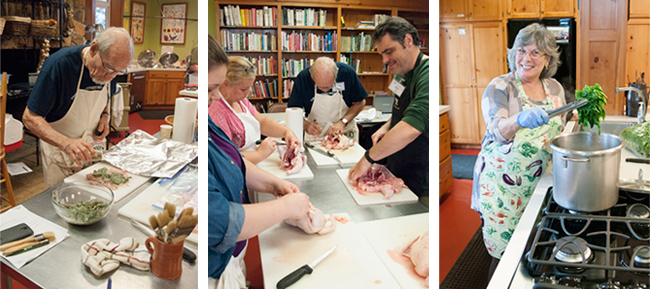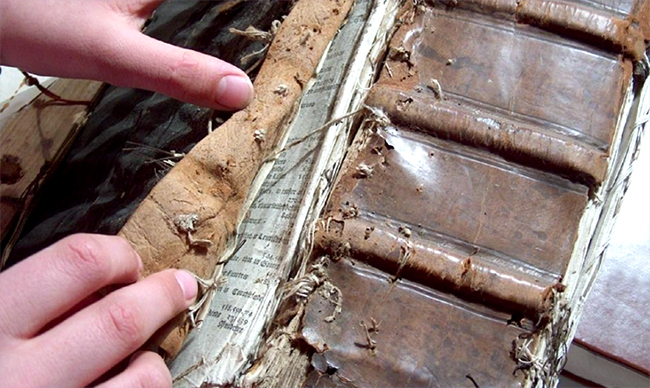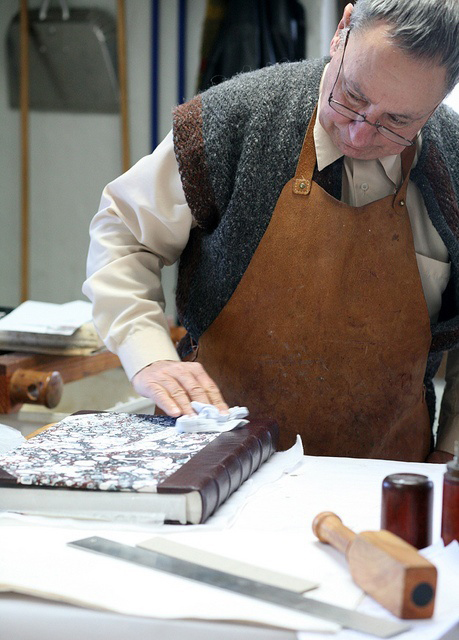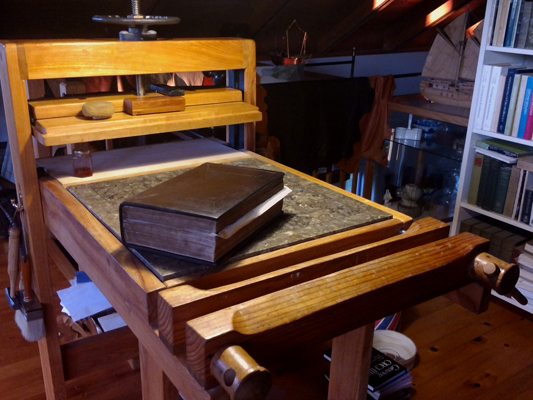[caption id="attachment_13846" align="aligncenter" width="600"]

The class display at Show and Tell (2013)[/caption]
If you are looking for a unique class at the Folk School that incorporates visual art, mixed media, and performance into a week of puppet fun, check out David Stephens' class
Hand-and-Rod Puppet Construction (
April 10-16, 2016). When David teaches his class, an infectious feeling of whimsy, fun, and joyful energy permeates the campus. David has been a puppeteer and puppet maker for over 20 years and is founder of
All Hands Productions in Atlanta, GA. I sat down with David during his last class here at the Folk School to find out a little more about the magic of puppetry.
[caption id="attachment_13855" align="alignright" width="249"]
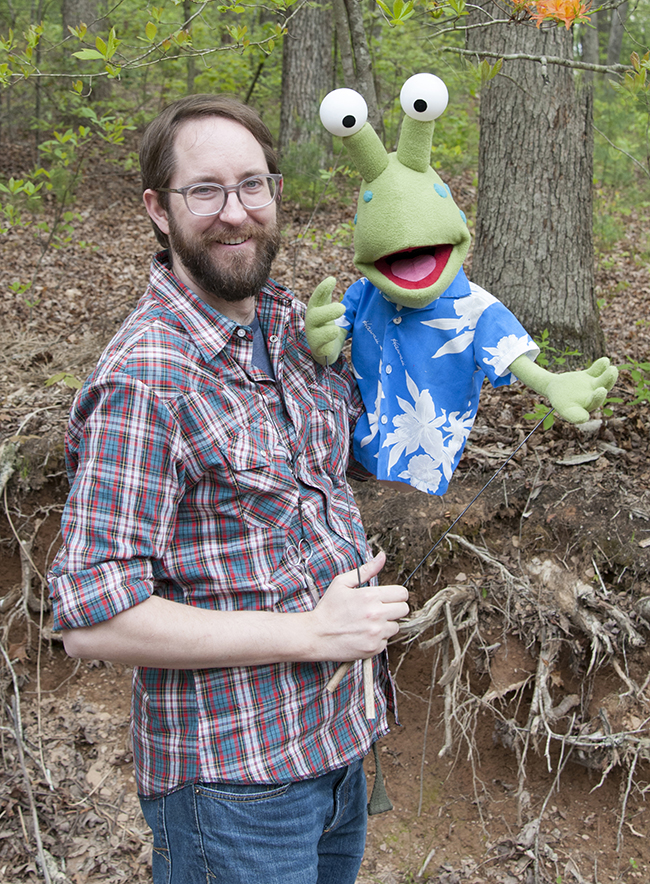
David with his new alien creation[/caption]
CP: Is the person who creates the puppet usually the puppeteer?
DS: Some people are just builders, and some people are just performers. I do both and I feel like I am a more informed builder, because I am a performer, and vice versa. Understanding the mechanics of how the puppet is made makes me a better performer. Thinking like a performer makes me a better builder, because I know what I want the puppet to be able to do. It can be a symbiotic relationship.
I like the visual art aspect just as much as the performance part. Making a puppet from scratch is very gratifying. You take this idea in your head and realize it in three dimensions, which is pretty cool.
CP: Describe what a week is like in your Hand-and-Puppet Construction class.
DS: For the first few days, everybody is making the same basic form. By the end of the week, students are creating their own characters, using their imaginations to come up with different facial feature combinations. The personalities of the puppets start to come out later in the week. You see this extreme change in the room from things that look very much the same, to very distinct looking characters.
The difference between the puppets that I make and the puppets that these students make is about 20 years of experience. We are all working with the same basic pattern. Experience is the only difference; otherwise we are making the puppets from exactly the same patterns and materials.
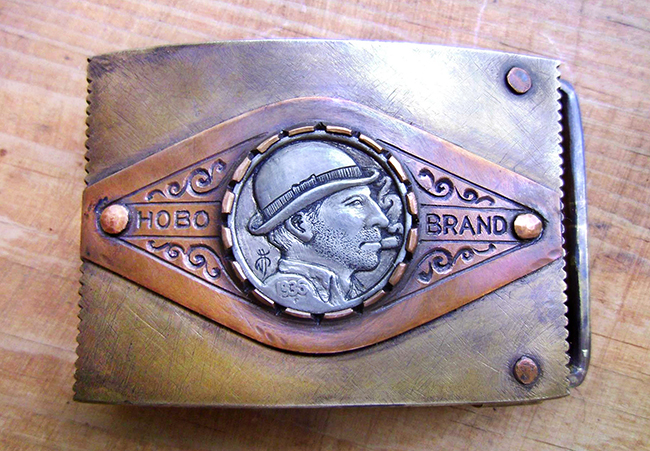 Tom Patterson has been a hand engraver and metalsmith for more than 50 years. Starting in his father's shop at age 14, he has been a lifelong student of metals and their manipulation. Currently, Tom continues his studies from his home studio in the mountains of western NC, where he fabricates artifacts of astonishing peculiarity. Unsure of what a hobo nickel is, I resisted the urge to google and decided to sit down with Tom and find out a bit more about the class. Enjoy our interview!
[caption id="attachment_16076" align="alignright" width="150"]
Tom Patterson has been a hand engraver and metalsmith for more than 50 years. Starting in his father's shop at age 14, he has been a lifelong student of metals and their manipulation. Currently, Tom continues his studies from his home studio in the mountains of western NC, where he fabricates artifacts of astonishing peculiarity. Unsure of what a hobo nickel is, I resisted the urge to google and decided to sit down with Tom and find out a bit more about the class. Enjoy our interview!
[caption id="attachment_16076" align="alignright" width="150"]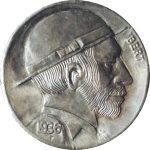 Hobo nickel by renowned original era carver Bertram "Bert" Wiegand[/caption]
CP: What is a hobo nickel?
TP: It’s a modified Indian Head Buffalo nickel and the profile of the Indian or the buffalo on either side has been modified to be something else. It was commonly used by hobos during the Great Depression to increase the value of a nickel. They could trade it for a ride, buy a meal, or buy off a train cop. People started liking hobo nickels and then coin collectors start to collect hobo nickels. Some of nickels created by carvers during the Depression Era became so valuable that modern people, who had some engraving ability, began to buy nickels from coin dealers to copy and counterfeit these original hobos. The counterfeit artist would get the big bucks for their “collectable” nickel. They were discovered, and instead of being discredited, they were celebrated and collected for their own abilities. So today, even though it is definitely a niche, there are a lot of hobo nickel carvers. One of the famous carvers, he had this little kit, or box, of his handmade tools, and it went to auction a few years back and it sold for $9000. The old original nickels are worth thousands of dollars now and some of the new nickels are worth a lot of money too.
Hobo nickel by renowned original era carver Bertram "Bert" Wiegand[/caption]
CP: What is a hobo nickel?
TP: It’s a modified Indian Head Buffalo nickel and the profile of the Indian or the buffalo on either side has been modified to be something else. It was commonly used by hobos during the Great Depression to increase the value of a nickel. They could trade it for a ride, buy a meal, or buy off a train cop. People started liking hobo nickels and then coin collectors start to collect hobo nickels. Some of nickels created by carvers during the Depression Era became so valuable that modern people, who had some engraving ability, began to buy nickels from coin dealers to copy and counterfeit these original hobos. The counterfeit artist would get the big bucks for their “collectable” nickel. They were discovered, and instead of being discredited, they were celebrated and collected for their own abilities. So today, even though it is definitely a niche, there are a lot of hobo nickel carvers. One of the famous carvers, he had this little kit, or box, of his handmade tools, and it went to auction a few years back and it sold for $9000. The old original nickels are worth thousands of dollars now and some of the new nickels are worth a lot of money too.




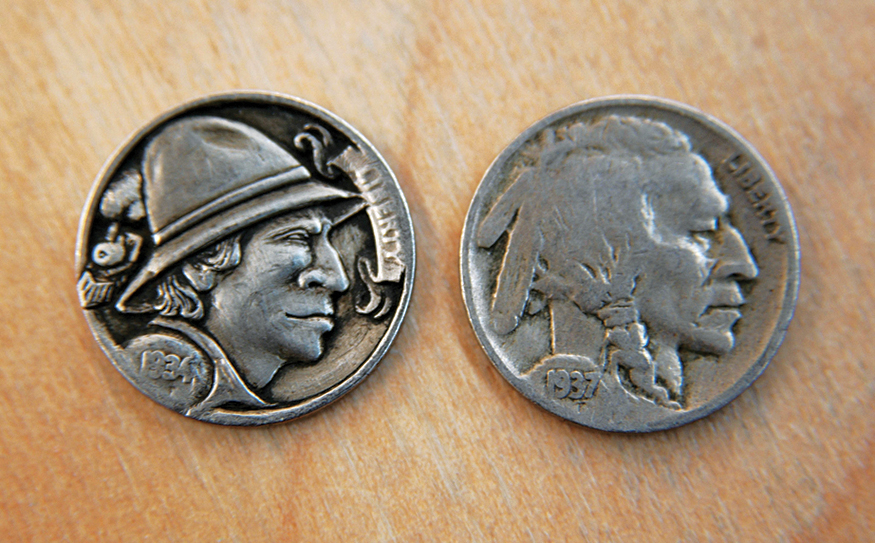
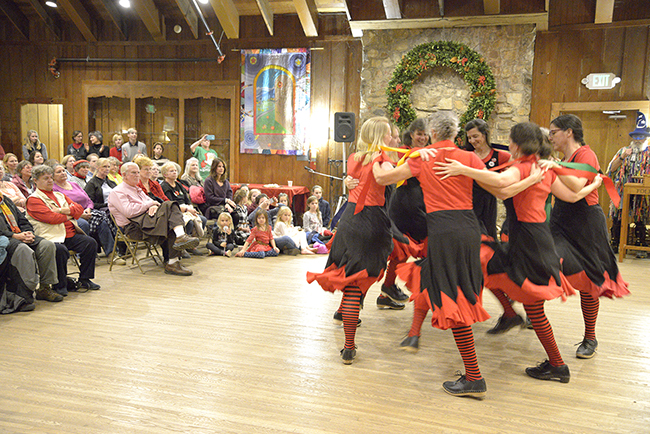
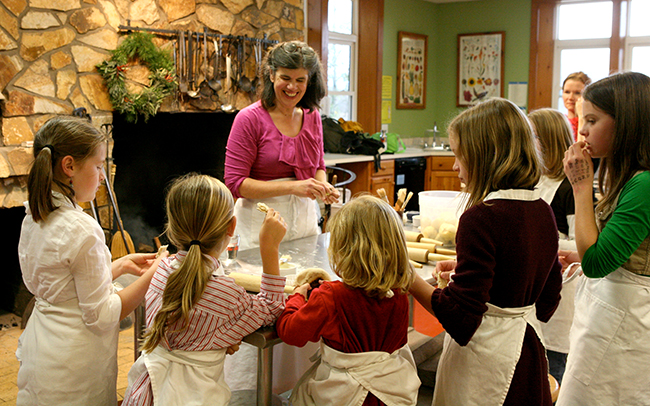 Children make cookies for the Holiday Kids Party[/caption]
The month of December is a special time at the Folk School. Events, parties, food, themed classes, concerts, dances and performances unite the community in the holiday spirit. When the wreaths, garlands, and handcrafted ornaments appear in early December, we know the magic of the season has arrived. Recently, I connected with Nanette Davidson, our longtime decorating maven and mastermind, to ask about holiday traditions at the Folk School. Enjoy our interview!
[caption id="attachment_15944" align="alignright" width="228"]
Children make cookies for the Holiday Kids Party[/caption]
The month of December is a special time at the Folk School. Events, parties, food, themed classes, concerts, dances and performances unite the community in the holiday spirit. When the wreaths, garlands, and handcrafted ornaments appear in early December, we know the magic of the season has arrived. Recently, I connected with Nanette Davidson, our longtime decorating maven and mastermind, to ask about holiday traditions at the Folk School. Enjoy our interview!
[caption id="attachment_15944" align="alignright" width="228"]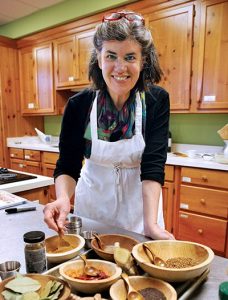 Nanette in the Cooking Studio[/caption]
CP: When does the holiday season begin for you?
ND: Well, I think about this off and on through out the year, planning simple projects for the winter holiday season and for spring's May Day and June's Auction Gala sometimes many months in advance. I have asked for help from other artists and dancers in the community to generate handmade decorations including giant puppets for parades. Jan and I love the seasonal celebrations that come from many rural, agricultural communities. When you live in the Appalachian countryside where there are distinct perennial landscapes, it's easy to celebrate the beauty of the changing seasons.
CP: What is your favorite Folk School December holiday tradition?
ND: We have so many great parties in December for the local community as well as our students who come in for a week. In the original days of the JCCFS, the student body was closely tied to the community and seasonal events were held to pull everyone together. We still want to include our local community and they are present here at weekly dances and concerts. We have the Old Folks Party, Christmas Dance/Dessert Potluck, New Year's Eve Dance, and the Children's Party when Santa arrives in the BFD Firetruck, sirens wailing. I have always helped with the Children's Party which includes crafts, musical chairs, storytelling, Morris performance, homemade cookies, and live music and dance for the kids. Even though we are an adult school we reach out to our local kids at Christmas and in the summer. More and more show up on the dance floor now. Every child that has a great folk school experience can help us preserve the school for the future.
Nanette in the Cooking Studio[/caption]
CP: When does the holiday season begin for you?
ND: Well, I think about this off and on through out the year, planning simple projects for the winter holiday season and for spring's May Day and June's Auction Gala sometimes many months in advance. I have asked for help from other artists and dancers in the community to generate handmade decorations including giant puppets for parades. Jan and I love the seasonal celebrations that come from many rural, agricultural communities. When you live in the Appalachian countryside where there are distinct perennial landscapes, it's easy to celebrate the beauty of the changing seasons.
CP: What is your favorite Folk School December holiday tradition?
ND: We have so many great parties in December for the local community as well as our students who come in for a week. In the original days of the JCCFS, the student body was closely tied to the community and seasonal events were held to pull everyone together. We still want to include our local community and they are present here at weekly dances and concerts. We have the Old Folks Party, Christmas Dance/Dessert Potluck, New Year's Eve Dance, and the Children's Party when Santa arrives in the BFD Firetruck, sirens wailing. I have always helped with the Children's Party which includes crafts, musical chairs, storytelling, Morris performance, homemade cookies, and live music and dance for the kids. Even though we are an adult school we reach out to our local kids at Christmas and in the summer. More and more show up on the dance floor now. Every child that has a great folk school experience can help us preserve the school for the future. 

